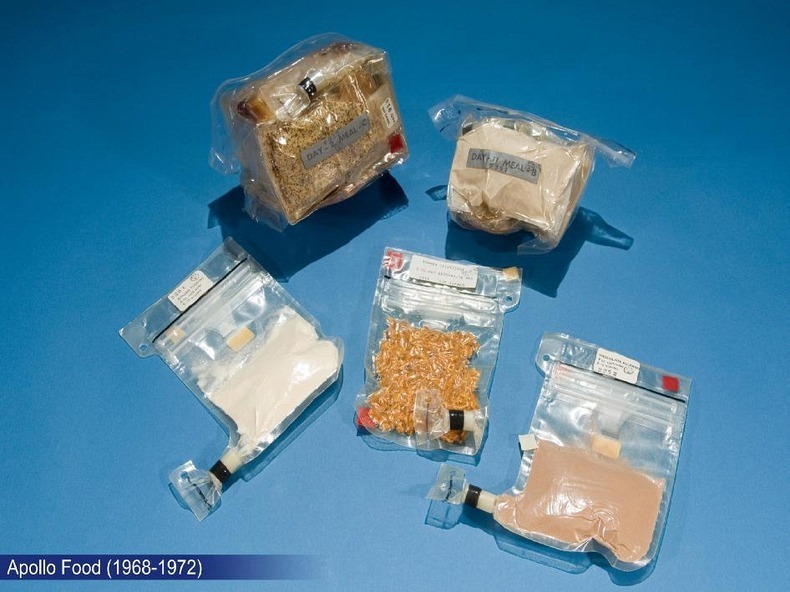NASA’s Advanced Food Technology Project is responsible for providing space flight crews with a food system that is safe, nutritious, and acceptable to the crew, while balancing appropriate vehicle mass, volume, waste, and food preparation time for exploration missions. For the past 50 years, the methods involved in the preservation process have evolved from pilots eating seed and crackers to allowing for gourmet diets like freeze dried shrimp and meats to be eaten.
John Glenn was America's first man to eat anything in the near weightlessness of Earth orbit. Before that, Yuri Gagarin, the first man on space, experimented by eating three 160 g toothpaste-type tubes serving puréed meat and chocolate sauce for lunch. Glen found the task of eating fairly easy, but found the menu to be limited. Many Mercury astronauts had to endure bite-sized cubes, freeze dried powders, and semiliquids stuffed in aluminum tubes. The astronauts found it unappetizing, experienced difficulties in rehydrating the freeze-dried foods, and did not like having to squeeze tubes. Moreover, freeze-dried foods produced crumbs which could foul instruments.
Several of the food issues from the Mercury missions were addressed in the Gemini missions. Squeeze tubes were altogether abandoned. Bite-sized cubes were coated with gelatin to reduce crumbling, and the freeze-dried foods were encased in a special plastic container to make reconstituting easier. With improved packaging came improved food quality and menus. Gemini astronauts had such food choices as shrimp cocktail, chicken and vegetables, butterscotch pudding, and apple sauce, and were able to select meal combinations themselves.
By the time of the Apollo program, the quality and variety of food increased even further. Apollo astronauts were first to have hot water, which made rehydrating foods easier and improved the food's taste. These astronauts were also the first to eat out of a bowl with a spoon.
Eating in space improved further in Skylab. Larger living areas on the Skylab space station allowed for an on-board refrigerator and freezer, which allowed perishable and frozen items to be stored. Even a dining room and table were available.
Shuttle astronauts have an astonishing array of food items to choose from. They may eat from a standard menu designed around a typical Shuttle mission of 7 days, or may substitute items to accommodate their own tastes, or design their own menus. Astronaut Sandra Magnus even cooks meals for her and the team aboard the International Space Station.

Source: NASA
























Hi, i think that i noticed you visited my web site so i came
ReplyDeleteto return the favor?.I'm trying to find things to enhance my website!I guess its adequate to make use of some of your concepts!!
Also visit my web blog: Orlando Chiropractor